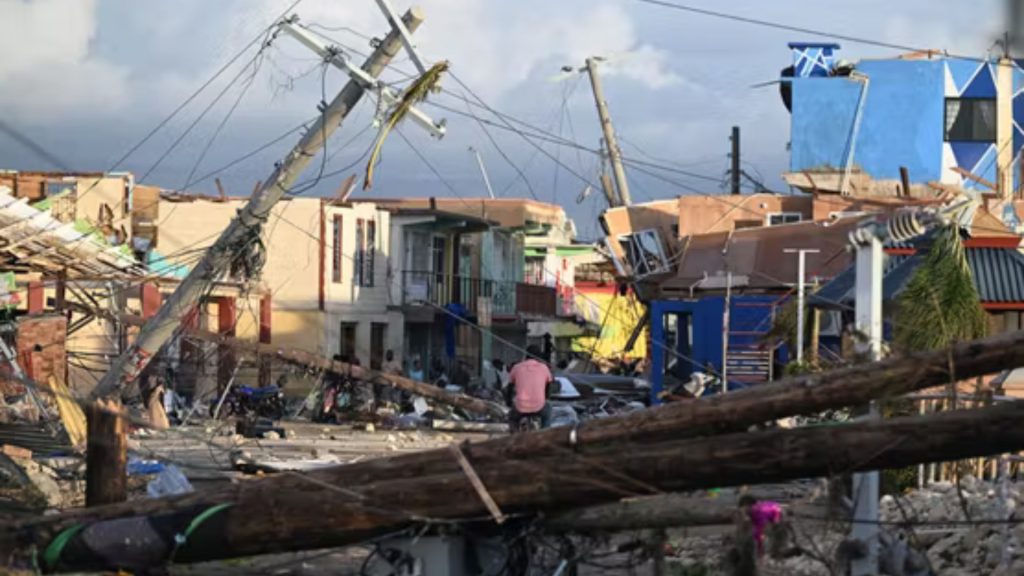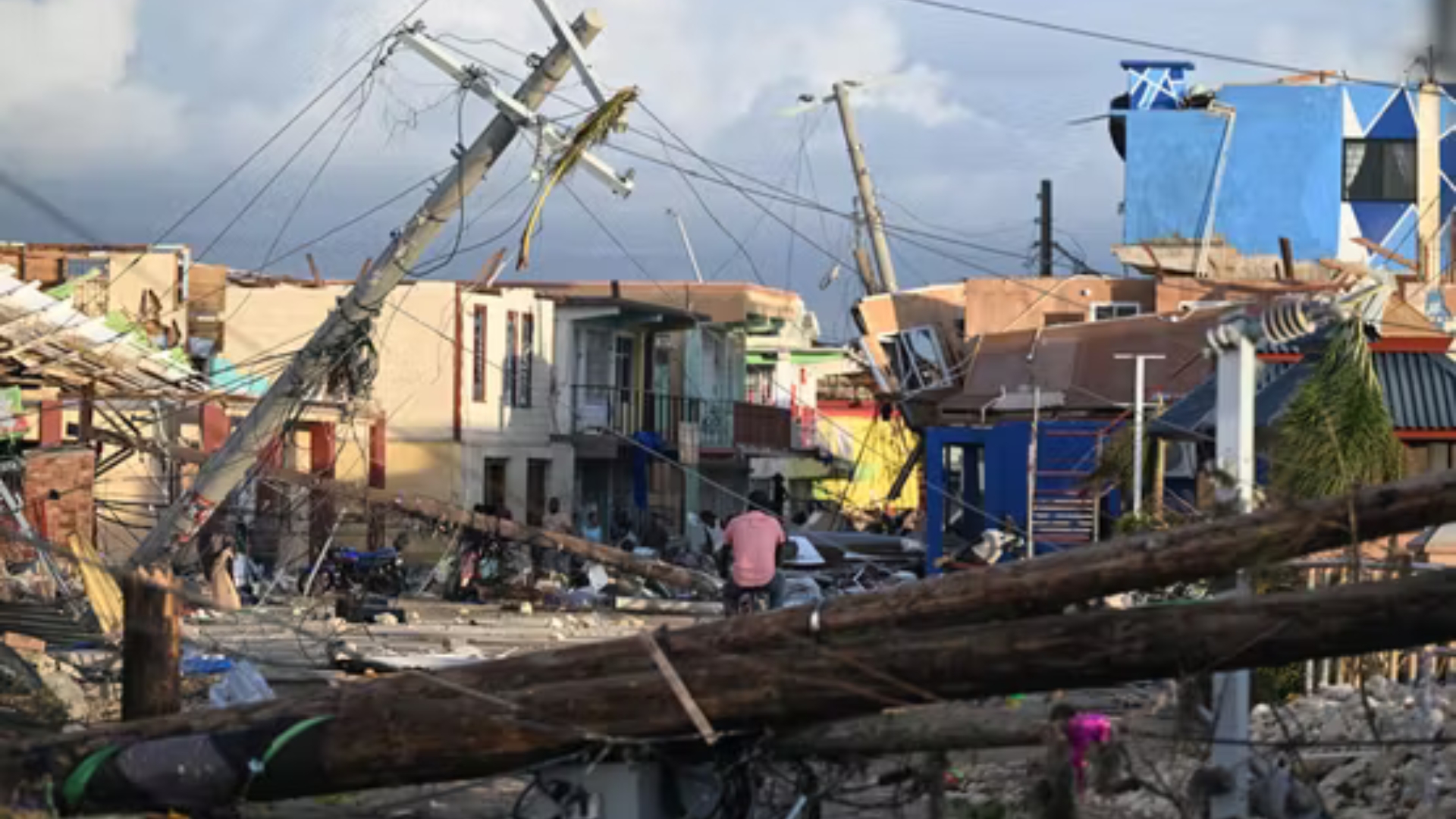In late October 2025, Hurricane Melissa struck Jamaica and parts of the Caribbean, leaving behind catastrophic destruction and loss of life. According to Reuters, the storm made landfall on October 28, 2025, near New Hope in Westmoreland Parish on Jamaica’s southwest coast as a Category 5 hurricane — the strongest hurricane ever to hit the island in recorded history. With sustained winds of 185 miles per hour (approximately 295 kilometers per hour) and a central pressure around 892 millibars, Melissa caused widespread flooding, landslides, and power outages. (Sources: Reuters, The Washington Post, The Guardian)
Jamaica: The Hardest-Hit Nation
Jamaica bore the full force of Hurricane Melissa. According to The Washington Post, the eye of the storm crossed directly over the island’s southwestern region, particularly affecting St. Elizabeth, Westmoreland, Clarendon, and Manchester Parishes. Thousands of homes were damaged or destroyed, roofs were ripped off, and power lines were downed. Some areas, including Black River and Savanna-la-Mar, were reported “underwater” following hours of relentless rainfall, with up to 40 inches (approximately one meter) recorded in isolated locations, according to Reuters. Jamaica Public Service (JPS) confirmed that more than 500,000 customers lost electricity, and cell networks experienced widespread outages. Early reports from The Guardian confirmed at least three deaths in Jamaica, with many more injured.
Prime Minister Andrew Holness declared Jamaica a national disaster area, stating that “the damage to infrastructure and livelihoods is unprecedented.”
Beyond Jamaica: Widespread Caribbean Impact
Although Jamaica experienced the worst damage, Hurricane Melissa also affected several other Caribbean nations. In Haiti, heavy rainfall and flooding caused landslides in mountainous regions, leading to at least 10 deaths, according to Reuters. The Cayman Islands experienced tropical storm force winds and flooding in low-lying coastal areas as Melissa passed nearby. Western Cuba faced hurricane force gusts and coastal inundation after the storm left Jamaica. The Bahamas experienced dangerous seas and heavy rainfall as Melissa moved northward, though the storm began to weaken slightly.
According to Le Monde, the overall Caribbean death toll exceeded 30 people as of October 30, 2025, with hundreds of injuries and thousands displaced across multiple countries.
Environmental and Economic Toll
The World Meteorological Organization (WMO) described Hurricane Melissa as “the worst storm to strike Jamaica this century.” Early assessments estimated damages exceeding 2 billion US dollars across the Caribbean. Agriculture was hit particularly hard, with crops such as bananas, sugarcane, and coffee destroyed across large areas. Roads, bridges, and coastal ports suffered severe structural damage, while tourism, one of Jamaica’s key industries, was disrupted as resorts along the southern coast closed indefinitely due to flooding and property loss.
Environmental experts warn that the intensity of Hurricane Melissa aligns with predictions linking climate change and warming sea-surface temperatures to stronger tropical cyclones. (Sources: Reuters, The Washington Post)
Recovery Efforts Underway
Emergency crews, military units, and volunteers began clearing debris and restoring access to cut-off communities in the days following the storm. International aid from the Caribbean Disaster Emergency Management Agency (CDEMA), UNICEF, and neighboring nations arrived quickly. However, many regions remain without electricity and clean water, and full rebuilding is expected to take months. The Office of Disaster Preparedness and Emergency Management (ODPEM) continues to urge residents to follow safety advisories and report missing persons.

(Image: The devastated North Street neighborhood of Black River, Jamaica, after Hurricane Melissa swept through on October 29, 2025.)
Photo by Ricardo Makyn / AFP — via Le Monde.
(Original source: Le Monde – “Hurricane Melissa has killed more than 30 people in the Caribbean”)

